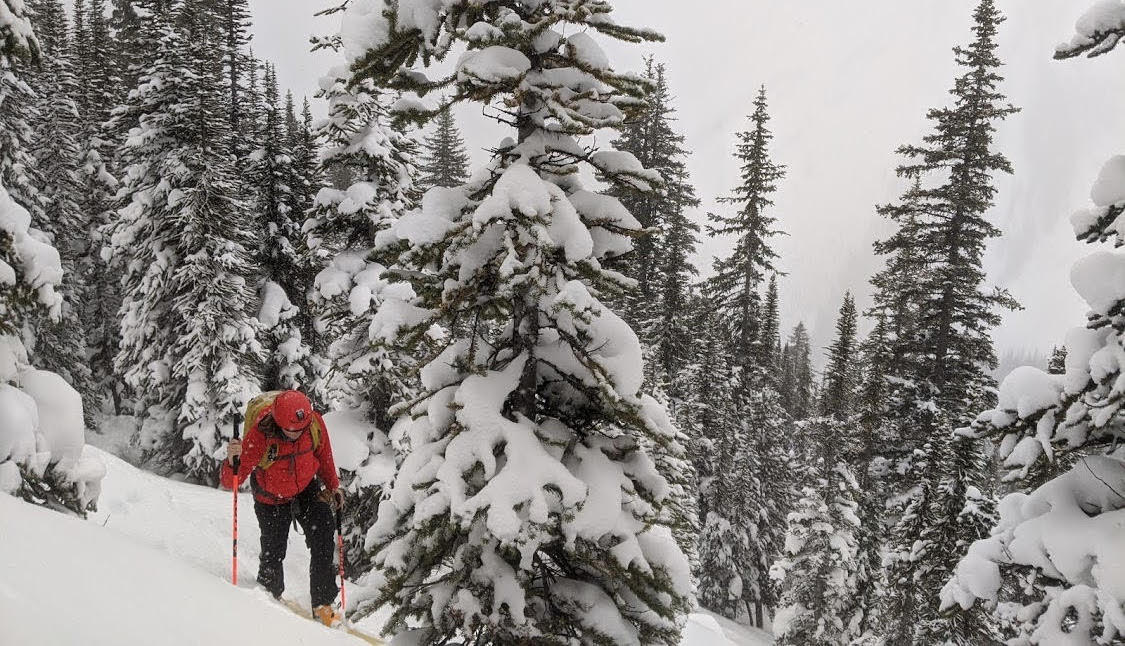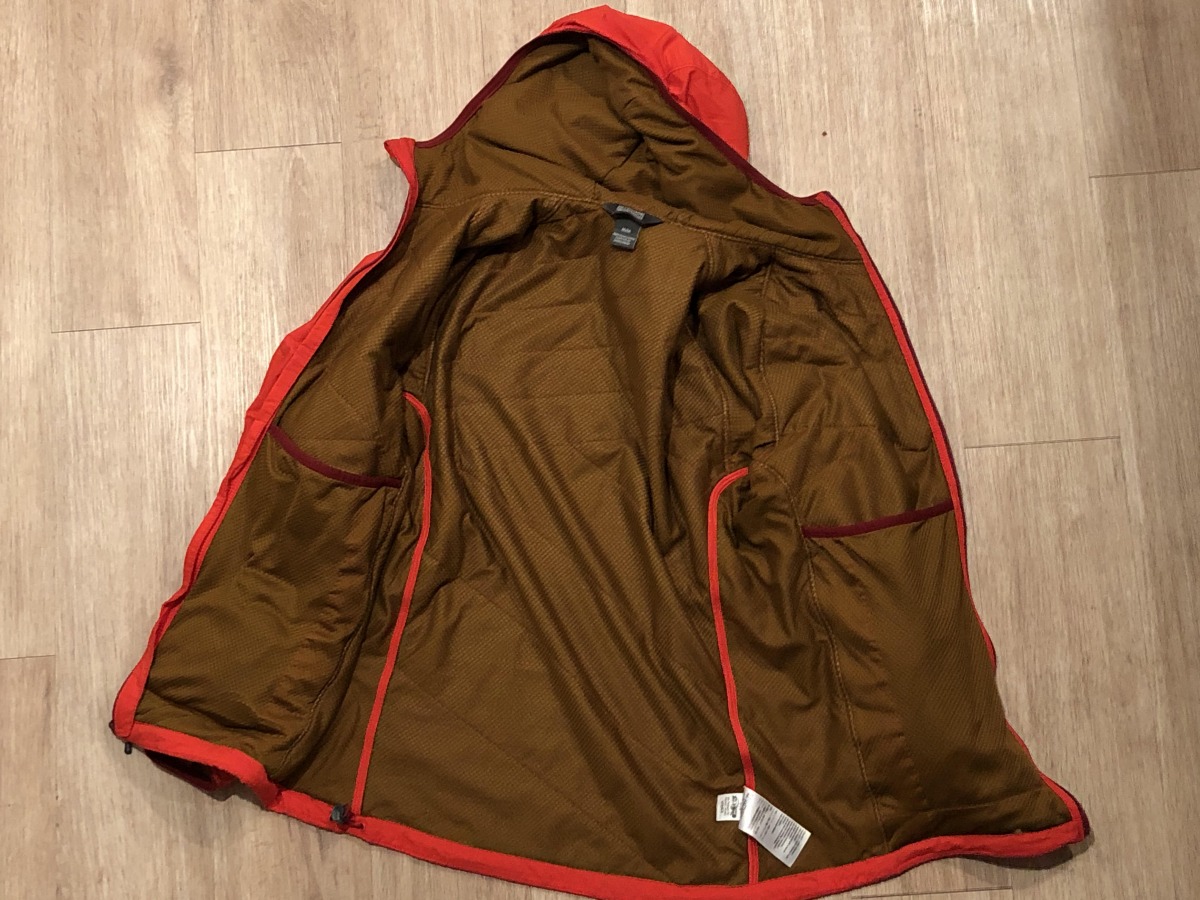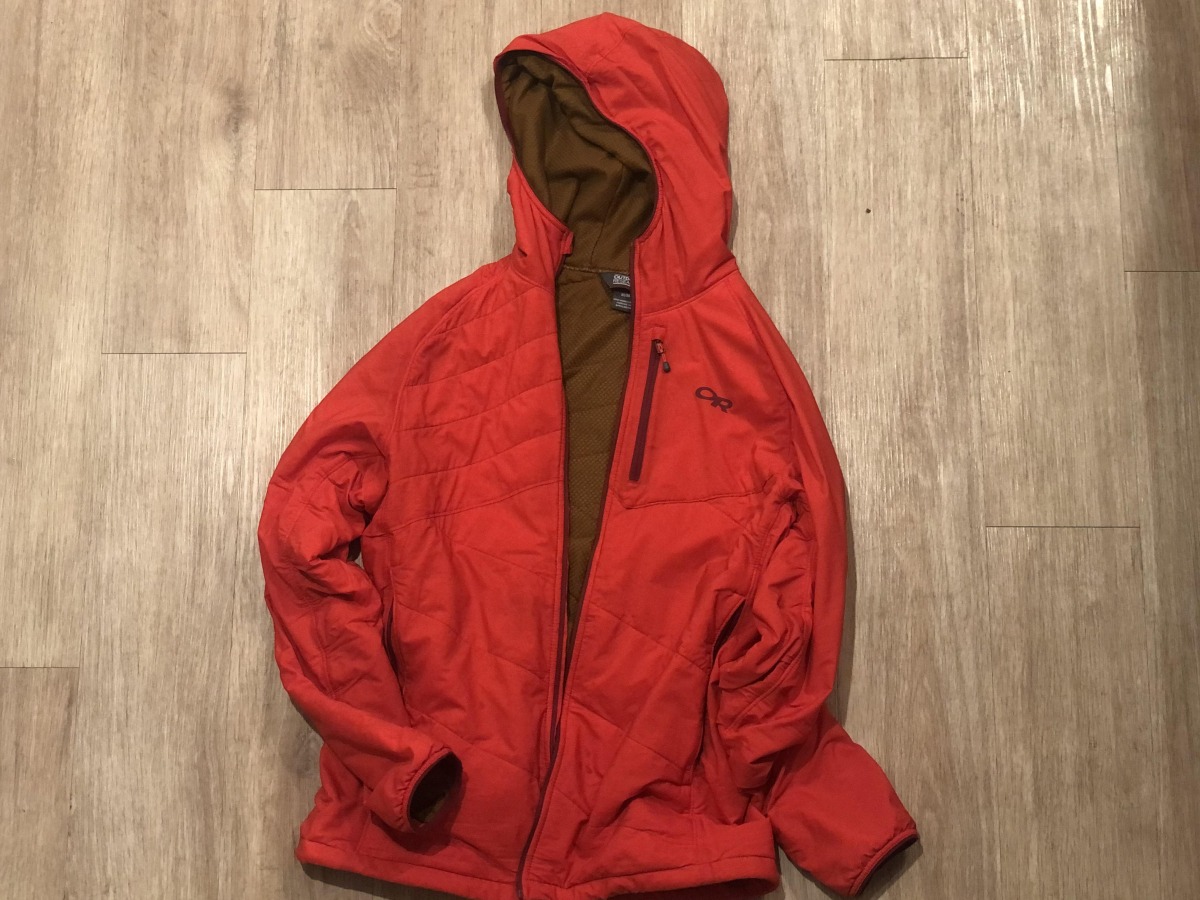
The Refuge Air proved to breath well while also retaining warmth when wet during big touring days in BC.
A hooded midlayer jacket that checks all the boxes
Words and photos by Greg Obernesser
I was cautiously optimistic when I started testing The Refuge Air with OR’s new Vertical X Air active insulation technology. I’ve been skiing in the same pieces for the last five years — the Arc’teryx Atom LT or a Patagonia R1 — updating them when new models are released. I’ve found that consistency is key with midlayers; once you know what works or your body, fits right, and keeps you out there the longest it’s tough to make a switch. But based on desired factors of fit, durability, weather resistance, and breathability-warmth balance, the OR Refuge Air has recently earned a spot in my midlayer options. Here’s why.
Testing Environment
I recently went up to Golden, British Columbia for a week long hut trip in the North Columbia range with Golden Alpine Holidays. The Refuge Air was the only midlayer I brought because we were restricted on our baggage size for weight and size for helicopter travel. I toured everyday at around 7,000ft near and below treeline. The loops were about 800 vertical feet and, with the amount of light we had, I was able to get 3-5 in each day. Temperatures ranged from single digits to low 20s. Touring conditions were boot to waist deep snow. I have also been resort touring with the jacket for about a month now in Colorado in January. It has been cold, dry, and snowy.
Fit
I am 5’11″ and 175lbs and tried a size medium. The fit is slim and athletic. When I stick my arms out in both directions or if I reach upward, the jacket’s sleeves retract 9cm from my wrist to my forearm. In the same motion, the jacket lifts up from my hips to just below my nave approximately 16cm. While touring these retraction lengths were noticeable, but not detrimental. It has thumb loops to keep your sleeves pinned to your wrists if needed. While pulling one arm against my body, I feel the back of the jacket stretch. The jacket is not overly rigid and has some give to it. The hood is large and roomy and fits the majority of my ski helmet. The whole of a slimmer mountaineering helmet could easily fit. While form fitting in size, it feels snug and tailored for backcountry skiing. I ski with a tight Dynafit TLT 3L shell and it does not make me look “puffy”. It has 3 external pockets; 1 breast, 2 hand and 2 interior drop-in pockets big enough to fit skins in.

The VerticalX Air insulation lends itself to stop and go activities where breathability is key for motion but warmth is needed when stopped.
Durability
The Refuge Air uses 41% nylon mini ripstop material. This outer material layer of the jacket provides high strength to weight ratio. It also uses Pertex Quantum Air Fabric for wind and water resistance. When wearing insulated midlayers, I often get nervous about snagging branches and getting holes in it. Even the littlest of nicks can start to compromise piece. While bushwhacking through the extremely thick low elevation trees British Columbia is known for, I caught the jacket on a ton of pine branches and it held up super well. We’ll see how it does over a the rest of the season, but so far so good there.
Weather Resistance
For a thinner, more form fitting jacket, the Refuge Air held its own against all of the weather the testing environment provided. The Pertex Quantum Air fabric provided decent wind protection until wind became excessive enough to warrant a hardshell. The water resistance was decent as well. It snowed a healthy amount while I was in BC; 30cms overnight and it hammered all day. During a six hour tour, I kept the jacket on the whole time. My friends and I broke trail up a 35 degree slope in waist deep snow for about 2,000 feet while constantly knocking snow on ourselves from nearby trees. By the time I got down from the line, the jacket was wet on the outside and we had to skin another 1,500 feet back up to get to the hut. Fortunately the jacket never soaked through to the interior.
Breathability-Warmth Balance
This jacket uses new proprietary technology from Outdoor Research called VerticalX Air, which is supposed to provide a better warmth-to-weight ratio, better breathability while highly active, and higher loft extension overtime. It excels in stop-and-go situations where you want a combination of warmth while not moving and breathability while the move. VerticalX Air works though its 3D woven structure which traps warmth while also being far more breathable then traditional constructed insulation. (For reference, another technology in the category, Polartec’s Alpha, is also a raschel knit, constructed in a similar way.)The jacket’s interior has ActiveTemp, which helps keep the wearer warm while at rest and cool while on the move. The system seems to work. While skinning with the Refuge Air, I never got overly hot or cold. I also never took it off. The only time I noticed getting overly hot was when I skinned with the shell over the jacket, probably because the shell compromised breathability. So, for breathability and warmth, the Refuge Air passed the test.
Bottom line
The Refuge Air Hooded Jacket is a quality piece. The athletic trim keeps the ski tourer at the heart of its designed fit. It is a durable piece which can withstand a multitude of tree branches and long days touring. The exterior Pertex Quantum Air fabric holds up a lot better in all sorts of weather than I originally thought it would. The VerticalX Air in combination with ActiveTemp both kept me warm and cool while touring. I would lean on this piece if you are someone who likes an athletic fit, looking for something durable, with strong weather resistance, and needs superior breathability without sacrificing warmth retention.
Weight: 477 g
Stuffs into own pocket: yes
Removable hood: no
Shop for it
Greg Obernesser is a passionate skier who resides in Vail, Colorado. When Greg isn’t skiing, he is reading, writing, trading futures, and volunteering with Alpine Initiatives. You can follow his adventures on Instagram @instagregoh.
Beyond our regular guest bloggers who have their own profiles, some of our one-timers end up being categorized under this generic profile. Once they do a few posts, we build a category. In any case, we sure appreciate ALL the WildSnow guest bloggers!

